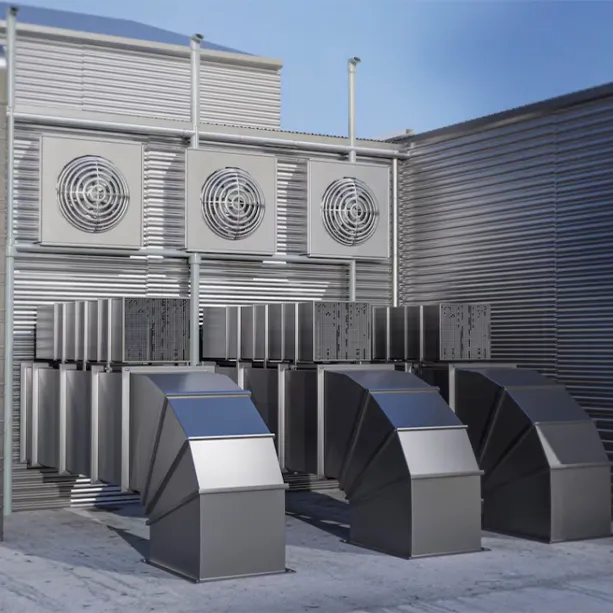Cooling systems are devices used to lower the temperature of an environment and maintain it at a certain level. These systems are utilized for various purposes, such as preserving food without spoiling, enabling electronic devices to operate without overheating, and allowing people to live in more comfortable environments.
Cooling systems have a wide range of applications, from homes to industrial facilities. Residential refrigeration systems often come in the form of refrigerators and air conditioning units. Industrial cooling systems, on the other hand, are designed for much broader and complex applications, such as food storage warehouses, pharmaceutical manufacturing facilities, and the chemical processing industry.
The design of refrigeration systems depends on several factors, including the size of the area to be cooled, the degree of cooling needed, and energy efficiency. The operating principle of refrigeration systems is based on the cycle of a refrigerant fluid. This process works as follows:
The fluid warms up when compressed by a compressor.
- It cools down as it releases heat to the external environment through a condenser.
- A cooling effect is created by reducing its pressure through an expansion valve.
- This cold fluid circulates in an area called the evaporator, absorbing the heat from the internal environment.
- Thus, the cooling process occurs.
Heating Cooling Systems
Heating cooling systems are technological solutions designed to maintain the temperature conditions of spaces at the desired level. These systems make living spaces, work environments, and industrial facilities more comfortable and efficient. Heating and cooling processes are based on the principles of energy transfer.
The basic components of heating and refrigeration systems include:

The most fundamental component of the cooling system. It compresses the refrigerant fluid, increasing its temperature, and enables the fluid’s circulation within the system.
The fluid enters the condenser from the compressor. Here, the fluid turns into a liquid, and its effect spreads to the external environment.
The refrigerant expands at low pressure and low temperature. The cooling effect occurs at this stage.
The low-pressure refrigerant fluid from the expansion valve enters the evaporator. Here, it absorbs heat from the internal environment by evaporating.
Controls the system’s temperature. It automatically shuts off the system when the set temperature is reached or restarts it when the temperature falls below the set value.
Accelerate heat exchange by providing air flow through the evaporator and condenser.
Cleans the air entering the system. It filters out dust, pollen, and other particles, improving indoor air quality.
Transport the refrigerant fluid, air flow, and hot or cold air to appropriate places.
Carries heat within the system and facilitates energy transfer. The characteristics of the refrigerant fluid have a significant impact on the system’s efficiency and environmental effects.
The motor is at the heart of heating cooling systems, providing the driving force that enables the system to operate effectively. These motors run pumps that facilitate the circulation of the liquid coolant or compressors that manage the compression and expansion process of the refrigerant. The healthy operation of the motor is crucial for system efficiency and plays a significant role in optimizing energy consumption.
The liquid coolant is a component used in heating and cooling systems to transport heat. These liquids can be water or specially formulated cooling liquids. The liquid coolant absorbs or releases heat as it circulates between the system’s various components, thereby achieving the desired temperature conditions.
Heating cooling systems are vital for enabling people to live comfortably, preserving food items, and maintaining optimal operating temperatures for electronic devices, among many other purposes. The efficient operation of these systems depends on the harmonious functioning of all components. Heating refrigeration systems designed according to energy efficiency and environmental sustainability criteria are continually being improved through technological advancements.
For information on industrial filters, ventilation systems, and generators, you can contact AIRFAN
